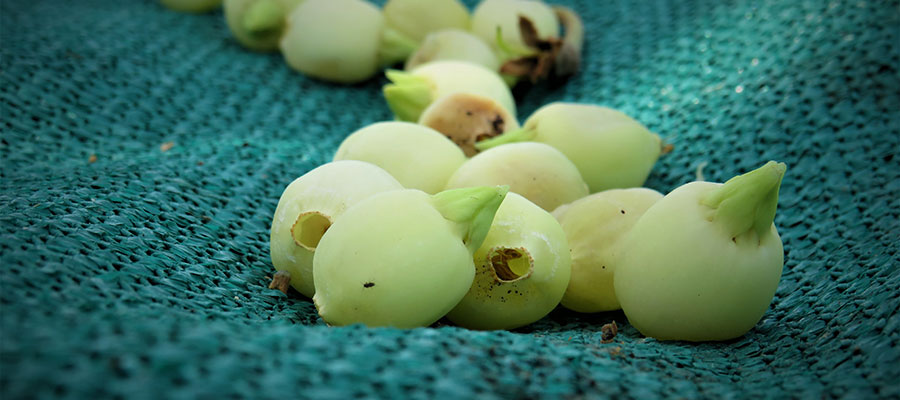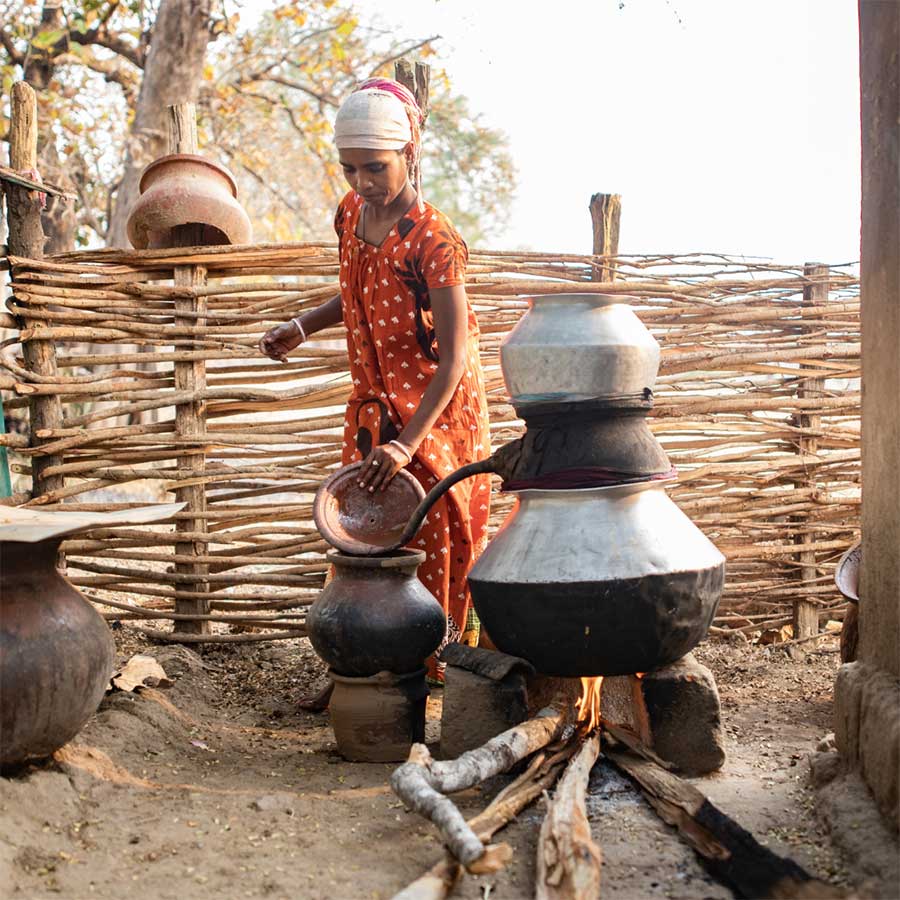Image Credits, Conrad Braganza.
Growing up in Madhya Pradesh, India, a region deeply intertwined with Mahua, I share a close bond with this floral spirit. This distilled beverage has a rich history, with references to its consumption dating back centuries. Various tribes from India, including the Santhals, Gonds, and Mundas, to name a few, residing in the Central, Northern, Eastern forests and plains of India, have cherished the tradition of preserving Mahua.
For those unfamiliar with Mahua, it is a distilled spirit crafted from the exquisite flowers of the Mahua tree. Yes, flowers! The only spirit in the world to be distilled from naturally sweet flowers, these super-sweet blossoms undergo a meticulous process of drying, fermenting, and distilling before being bottled, serving as a testament to India’s cultural heritage showcased to the world.
The Mahua tree, also known as “kalp vriksha” which translates to tree of life, Is a large tropical tree that reaches an impressive height of 15–18 metres and thrives abundantly, with an annual recorded collection of 500 million kilogrammes of flowers in thirteen states across India. The tribes utilise various parts of the Mahua tree, such as the flowers, fruits, branches, and leaves, for purposes like cattle feed, art, and medicine. However, its most renowned and significant use lies in the creation of Mahua liquor.
Interestingly, while 90% of the spirit produced is consumed locally, Mahua also has an unexpected French connection that traces back to a historical incident chronicled by J.F. Audibert in his book “The Art of Making Wines.” During the time when vineyards in France suffered from phylloxera, approximately 4,000 kilogrammes of dried Mahua flower consignments arrived at the port of Marseilles. Unscrupulous individuals also attempted to pass off Mahua as raisins, exploiting the flowers’ high sugar content during the emergence of artificial wines.
Amtuz Zaidi, a legal professional and historian from India, highlights the prohibitions imposed and its impact during British colonial rule in India, such as the “Bombay Excise Act of 1878” and the “Mahura Act of 1892.
” These prohibitions forbade indigenous tribes from collecting and storing Mahua flowers, leading to the clandestine practice of “moonshine distilling” of Mahua in various parts of India. Even after facing such prohibitions and challenges, Mahua’s influence transcended borders. On 17th January 1904, in the French newspaper “La patriote dans la famille,” Virgile Brandicourt mentions Mahua spirit, praising its quality.
He stated, “Mahua Spirit Ages gracefully, it emerges as a true masterpiece, evoking the remarkable qualities of Scotch whisky.” This accolade further reflects the enduring appeal and cultural significance of Mahua, both within India and on an international stage.
Recently, Mahua has experienced a remarkable surge in global recognition and admiration, holding paramount importance in the culture and livelihoods of numerous tribal communities in India. Conrad Braganza, the Manager Exports, Sales and Marketing: Principal Blender of Agave India, sheds light on the visionary, Desmond Nazareth, the Managing Director of Agave India, who was the first to recognise Mahua’s potential.
It all began in 2003 when Mr. Nazareth tasted a cloudy-looking distilled spirit in a PET bottle on his trip to Daman, India, prompting him to become the pioneer in commercial distillation and bottling of Mahua under the renowned DesmondJi brand. He passionately believes that Mahua serves as a custodian of the rich culture and traditions of India and possesses enormous global potential.
Currently, DesmondJi offers two distinctive variants: DJ Mahua, the Classic Mahua Spirit that perfectly represents the category, and DJ Mahua Liqueur. The production process involves double-pot distillation in a 6,500-litre still. To create this exceptional beverage, food-grade Mahua flowers sourced from four Indian states are carefully collected on nets and sun-dried on mats for 3-5 days, or dried using solar dryers.
Mr. Conrad Braganza further explains that “DJ Mahua Liqueur stands as a testament to the liquid’s limitless potential, boasting delightful flavours derived from a blend of spices such as Cinnamon, Cardamom, Clove, Fennel, and Honey”. As a display of innovative experimentation, DesmondJi is even exploring the tropical aging of Mahua in Ex- Agave American Oak Barrels, with the liquid already maturing for over twelve months.
“MAH – Spirit of the Forest, “is another remarkable brand paying tribute to Mahua and paving a new path for global appreciation of this unique spirit. The brand has made its mark in the French market and envisions expanding its operations further into the European continent. MAH proudly imports dried Mahua flowers from India and distills them in France, explains Mr. Rahul Srivastava, Partner at MAH Spirit.
The State of Madhya Pradesh, in India have recognised the enormous potential of Mahua as a cultural and economic treasure. Mr. Aniruddha Mookerjee, Advisor, Heritage Liquor to the state of Madhya Pradesh, enlightens us that the state has taken significant steps to preserve and promote this traditional spirit. Madhya Pradesh has granted Mahua the status of heritage liquor, acknowledging its significance in the state’s heritage and cultural identity.
Moreover, The State Government is actively supporting and empowering tribal self-help groups, imparting them with modern knowledge and techniques of distillation. By providing a seven-year tax holiday, the government aims to encourage these groups to further the growth of the Mahua category.
This visionary initiative has already borne fruit, with two self-help groups from different parts of the state launching their distinct brands, “Mond” and “Mohulo”, poised to make their mark in the industry.
The collective efforts of individuals, companies, and state governments are driving global recognition for Mahua. We hope the Indian government will implement a structured policy, including a national G.I. for Mahua, preserving its cultural heritage and diverse regional styles. Mahua’s rise continues, leaving an indelible mark on the global spirits landscape and celebrating India’s rich heritage.



